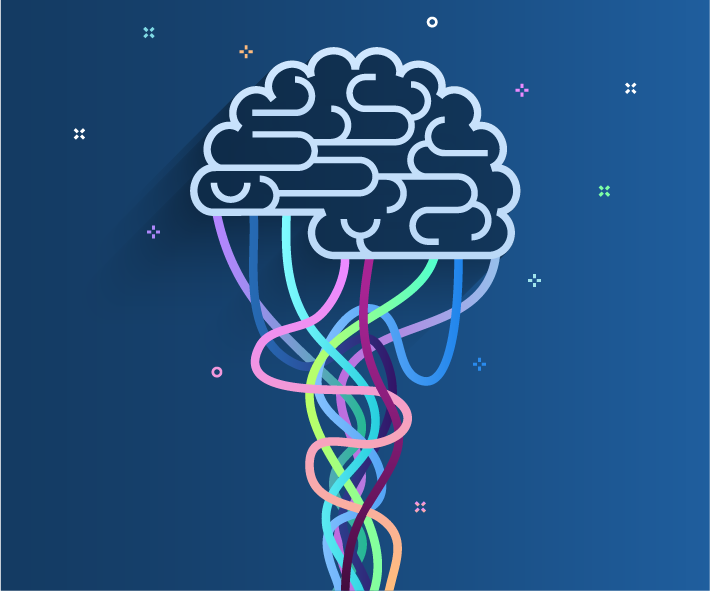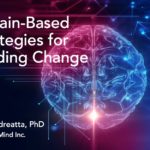How Your Brain's Wiring Impacts Ways You Work with HR Gazette

I recently participated in this episode, "How Your Brain's Wiring Impacts Ways You Work" with host Bill Banham of The HR Gazette. I hope you enjoy this modified transcript from our conversation. Listen to the full conversation here.
BILL BANHAM: How have you embraced gratitude in your life to fight through adversity and tough times?
BRITT: Thank you for the question. I came to the practice of gratitude in my thirties when I was struck by absolutely crippling panic attacks and I became an agoraphobe who couldn't leave my house. That launched me into therapy where I discovered that a lot of years of childhood abuse was coming to the surface. That was a dark and gnarly time as I was processing a lot of those memories and experiences.
But what I learned during that process was emotional self-regulation and gratitude, which is one of those practices that even when we’re in the throws of fear or anxiety, if we can shift to thinking about some things that we're truly grateful for, it can really calm the body down and take us out of that anxious state. I've continued to build that into my own life, but I also like sharing the research on it with others because it's just such a mind blowing set of tools. Gratitude, along with a mindfulness practice, are the keys to staying balanced. We’re a species that can worry a lot. We're designed to think the worst that could happen and predict worst case scenarios because it's part of our survival mechanism and, in today's world, where the news is 24/7 and our phones can keep us hooked for hours on end, I find that having mindfulness and gratitude are core to our survival. They can also provide a sense of calm and peace as well as help us find some happiness and joy.
BILL BANHAM: Can you share some of the latest discoveries about the brain and how to harness human biology to reduce resistance to change and change fatigue?
BRITT: Great question. I think it starts with acknowledging that we are designed as a species to see change as potentially dangerous. This is part of our survival mechanism and anything that changes in your environment–a loud sound, a smell of fire, smoke and an announcement from your CEO–all of those things can be signs of potential danger where things could go badly for us. We are designed to see them in a negative light and to go into worry until we get enough information that we can start to see what could be positive about it. For example, transparent communication from our leaders can really help. But it's not something that we just flip the switch overnight, it's a process where we settle more and more and more and eventually become open to change.
One of the things that I like to teach leaders is, first of all, this is natural and human. People are not being difficult, they're just being human. But when you understand the biology of it, you can do a much better job designing change. You can communicate it and announce it better. There's lots of things leaders can do that ultimately can help people move through that natural resistance more quickly and get on board so that the change is more successful. We also can do a lot to acknowledge progress and effort as people are moving through the change and give people training so that they can develop the new habits, skills and behaviors they need to live that change once it arrives.
Change fatigue is real. It happens when change is coming at you so fast and furious. You can't ever settle into the new normal before you've got more change. And if people didn't believe it was real before the last two years of the pandemic, I think everyone sees that it's real and we're actually hitting incredible levels of burnout in the workplace around the world right now. We can dig deep into our biological reserves to get through something dramatic but those reserves are about six months long, which is the time that a natural disaster would normally start to kind of clean up and get a little better. Well, the pandemic has gone on for so long and people have been digging deep for so long that this is why we're hitting such incredible levels of burnout and mental health issues. Ultimately, this is what's driving the great resignation. They're predicting that 55% of the workforce is gonna change jobs in the next 12 months.
BILL BANHAM: Can you share with me some more discoveries about the brain and some ways to harness human biology to bring out the best in your talent?
BRITT: I talk about them in my three books. Wired to Grow is all about learning and how we help people learn and maximize their ability to grow and change and become their best selves. In Wired to Resist, we get into the brain science of why we resist change and how to help people be more adaptive and resilient. And then I wrote another book on teams, Wired to Connect, and how we bring out the best in teams and why psychological safety and inclusion are so important. A lot of those themes are super important.
The other thing that I would say is in addition to talent professionals learning these concepts, we have to get them passed into the hands of our managers because our managers are the ones that create the day to day experience for 90% of your workforce. If we don't upskill managers, a lot of problems happen at that level. In fact, one study by Gallup found that only 10% of people have the innate skill to be a great manager, but good management is a skill that can be learned. We just have to be really intentional about putting managers through very conscientious manager training.
I recently finished building my Brain Aware Manager training. I've been super excited to work on that–it's just been released. We know that if we teach managers the brain science of how to bring out the best in themselves and others, they can really up-level the whole team. They can drive success on all the kinds of metrics that matter. So, I think in addition to us as a profession–learning these things for ourselves–we really need to think about how we get those in the hands of managers and our employees, because then we're all playing and heading toward the same goal and we're working together in concert with each other
BILL BANHAM: How can having a better understanding of brain science and its benefits help in our personal lives as well?
BRITT: Learning how to self-regulate and learning to have a mindfulness and gratitude practice can help you manage stress. One of the sessions that's in my manager training is emotional intelligence and the ROI on that is phenomenal. In fact, study after study has shown that if you teach people emotional intelligence skills, the return on investment to the organization is well over a thousand percent consistently. Emotional intelligence is being able to read emotion in yourself and others and then build healthy relationships with yourself and others. It predicts 90% of the competencies that make great leaders and great managers.
BILL BANHAM: Can you share some best practices and next practices in learning and how that's shaping talent development worldwide?
BRITT: I like to remind everyone that just because there's a shiny tool or platform, that in itself does not make great learning. Sometimes the best learning tool is a PDF document that you make available to someone. Sometimes the best learning tool is a very immersive virtual reality experience. It just depends on what behavior you're trying to shift and what's needed and what skill level are your learners coming in at and where you’re trying to move them. I like talent pros to be conscientious and thoughtful about when to use which tool. But we do know that there's some best practices that no matter what kind of learning you are building, these are the things that align with how the brain learns. One is our human attention span is 20 minutes maximum before we start to fade, and tune out. If you build your presentations or your learning experiences in 15 to 20 minute chunks of content followed by a processing activity, that really drives much better retention of the content and pushes it into long term memory. That's why microlearning videos are so helpful.
We also learn by watching others. So we have mirror neurons and that drives observational learning. Wherever you can have one of your best performers demonstrate something, or you film them doing it, that's really scalable and it helps people learn. We also know that when you hook new learning to something people already know it's much stickier. They're much more likely to retain it. Neuroscientists call these schemas. They're like little file folders in our brain of stuff we already know. You can leverage shared experiences in your company. I like to look for metaphors or analogies that everyone knows. For example, my change training is built around the metaphor of hiking or mountain climbing because even if you've never done it, you know what it is. I tell a really strong visual story in that whole training solution. The schema I use for emotional intelligence is a visual story around locks and keys because it's the mother skill that unlocks so much success. Playing with that kind of thing can make learning much more sticky.
And then, ultimately, learning designers have to think about themselves as habit designers. We need to pay attention to what the words and actions that someone needs to be doing. If the learning is successful, then we can work backwards to create the learning solution that gets them there. Part of that is making sure we build in practice. It takes 40 to 50 repetitions for a new habit to form and be grooved into an autopilot experience. A lot of training will do a lot of talking about the concept, but not enough doing of it. It’s important to give people a chance to not only practice, but get well on their way to 40 to 50 repetitions. Good learning solutions also meet learners where they're at. I really love doing the blended learning format or the flipped classroom where you have people to learn a little bit on their own. They come to an experience and you really use that time to do hands-on practice and apply it to their real lives. Then, you can do a post learning event where you extend that learning and this is where we can use lots of different tools to create a really robust learning experience for our people.
BILL BANHAM: Wonderful. Thank you very much. How can our listeners connect with you?
BRITT: Well, you can find me at either of my website 7thmind inc.com or my name BrittAndreatta.com. I'm on LinkedIn, Twitter, and Instagram. So look for my name in those places.
BILL BANHAM: Perfect. Well, this has been a lovely conversation. Thank you so much. I've learned a lot. And I'd love to get you back on again in the future.
Related Blogs
JOIN OUR COMMUNITY
Be the first to know of Dr. Britt Andreatta's latest news and research.








